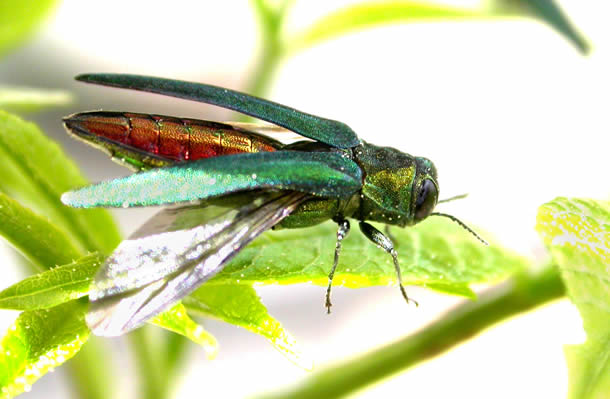
Nutrition

When considering nutrition for Agrillus planipennis, you should take into account the two different areas of their life cycle: developmental stage and adult stage. During the adult stage, A. planipennis is a herbivover as it feeds on ash leaves. The preferential order in diet reflects those of habitat, with Green, White, and Black being favored over Manchurian or Blue ash. However, life span was unaffected relative to diet explaining an essential nutritional advantage among Manchurian Ash. Generally, the diet of A. planipennis is straightforward and the beetle will typically indulge in whatever ash is available. Relatively, those feeding on Manchurian Ashes will be getting a better meal but will receive no additional advantages for doing so.

Given its relatively new emergence, there is little available
research on larva nutrition and metabolism.
However, given that larva develop in the phloem of Ash trees,
what the phloem is composed of is of vital importance.
Phloem is responsible for the transport of sugars, amino
acids, and other organic products throughout the tree. That
being said, all phloem isn't the
same. According to Dr. Rodrigo Mercader of the Department of
Entomology at Michigan State University,
Plants
are chemically diverse (greater chemical similarity among species)
and this diversity contributes greatly to which plants insects can
eat. Thus, Agrilus planipennis primarily feeds on Ash
species due to evolutionary pressures.